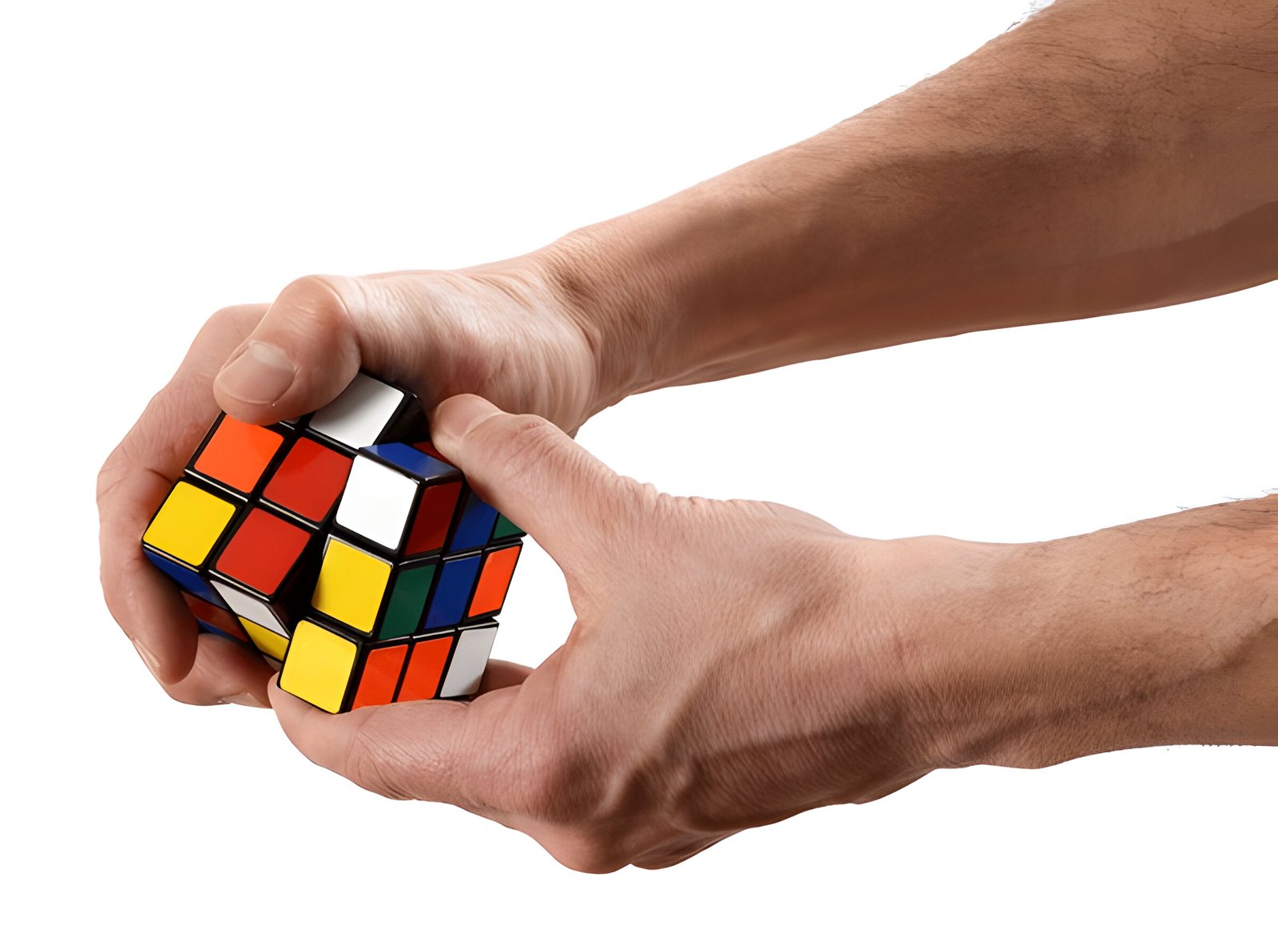The Rubik’s Cube has captivated puzzle enthusiasts for decades, challenging minds and testing spatial reasoning skills. While many find it daunting, solving this colorful cube is achievable with the right approach. This guide explores how to solve a Rubiks Cube in 20 moves, making it accessible to beginners and offering insights into the mathematical analysis behind this iconic puzzle.
Readers will learn the basics of Rubik’s Cube notation and movement before diving into a step-by-step algorithm to solve any Rubik’s Cube configuration. The guide breaks down the 20-move solution method, explaining each stage of the process clearly. By the end, readers will have the knowledge to tackle this classic puzzle with confidence, understanding the logic behind every twist and turn.
Rubik’s Cube Basics
Cube Notation Explained
The Rubik’s Cube uses a specific notation to describe moves. Single letters represent clockwise 90-degree rotations: F (Front), R (Right), U (Up), L (Left), B (Back), and D (Down). Adding an apostrophe (‘) indicates a counterclockwise turn, while a ‘2’ denotes a 180-degree turn. For example, F’ means a counterclockwise front turn, and U2 signifies a double upper face turn.
Understanding Cube Mechanics
The Rubik’s Cube consists of a skeleton holding six center pieces, which remain fixed in position relative to each other. There are 12 edge pieces with two colors each and 8 corner pieces with three colors. The cube’s internal mechanism allows layers to rotate independently, enabling various combinations and solutions.
Importance of Finger Tricks
Finger tricks are essential to solve the Rubik’s Cube efficiently. For U moves, use index fingers: left for U’, right for U. R moves involve holding the right face with the right hand, thumb on the bottom edge, and rotating the wrist. L moves mirror this technique. D moves require using ring fingers to push the bottom layer. Mastering these techniques improves solving speed and dexterity.
Also Read: how to pick a lock with a bobby pin
The 20-Move Solution Method
The 20-move solution method, also known as God’s Algorithm, represents the most efficient way to solve any Rubik’s Cube configuration. This method is based on the concept of God’s Number, which is 20 – the maximum number of moves required to solve any of the 43 quintillion possible cube permutations.
Breaking down the algorithm
To understand this method, one must break down the algorithm into smaller, manageable parts. The ‘super-flip’ configuration, discovered by mathematician Michael Reid in 1995, requires at least 20 moves to solve. This algorithm leads to a position where all single corners are solved, and every edge is in its place.
Practicing the moves
To practice the 20-move method, one can start from a solved cube and execute the algorithm repeatedly. This approach helps in recognizing patterns and understanding how pieces move around the cube. For instance, the ‘sledgehammer’ trigger, a common set of moves, appears frequently in various algorithms.
Tips for memorization
Visual pattern recognition is crucial for memorizing the algorithm. Instead of focusing solely on notation, solvers should observe how pieces move during execution. Watching the movement of F2L (First Two Layers) pairs and other solved edges can provide valuable cues. Additionally, breaking down the algorithm into triggers and recognizing recurring patterns can significantly aid in memorization and execution.
Conclusion
Mastering the Rubik’s Cube using the 20-move solution method opens up a world of puzzle-solving possibilities. This approach not only helps to solve the cube efficiently but also has an impact on one’s spatial reasoning and problem-solving skills. By breaking down complex algorithms into manageable steps and using visual pattern recognition, even beginners can tackle this iconic puzzle with confidence.
The journey to solve a Rubik’s Cube is more than just a fun pastime; it’s a way to sharpen the mind and boost logical thinking. As puzzle enthusiasts continue to explore new techniques and algorithms, the Rubik’s Cube remains a timeless challenge that bridges generations. Whether you’re a newcomer or a seasoned cuber, the 20-move method offers a fresh perspective to analyze and conquer this colorful conundrum.
FAQs
1. What are the steps to solve a Rubik’s Cube in 20 moves?
To solve a Rubik’s Cube in 20 moves, begin by rotating the bottom layer counterclockwise once. Then, perform two clockwise rotations on the right side. Follow this by spinning the front side of the cube clockwise once. After these steps, the colors on each side of the cube should start aligning.
2. How can one solve a Rubik’s Cube in 21 moves?
To solve a Rubik’s Cube in 21 moves, follow these steps:
- Step 1: Form a 2×2 block on the cube.
- Step 2: Identify and position the white/red/blue corner correctly.
- Step 3: Rotate the red/white edge.
- Step 4: Align the red/white edge with the red/white/blue corner.
- Step 5: Position the blue/white edge correctly.
3. Is it possible for a person to solve a Rubik’s Cube in 20 moves?
Yes, it is possible for a person to solve a Rubik’s Cube in 20 moves. In 2010, mathematicians and computer programmers demonstrated that any Rubik’s Cube configuration could be solved within a maximum of 20 moves.
4. What is the “God’s algorithm” for a 3x3x3 Rubik’s Cube?
“God’s algorithm” for a 3x3x3 Rubik’s Cube refers to the mathematical calculation that determines the minimum number of moves required to solve the cube from any solvable state (excluding states with twisted corners). This optimal number of moves is known as “God’s Number,” which is 20 moves for the standard 3x3x3 cube.
Also Read: how to pick a lock with a bobby pin




